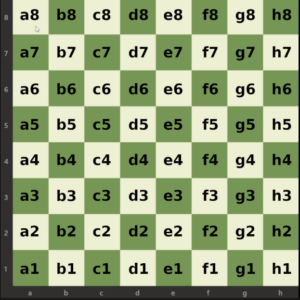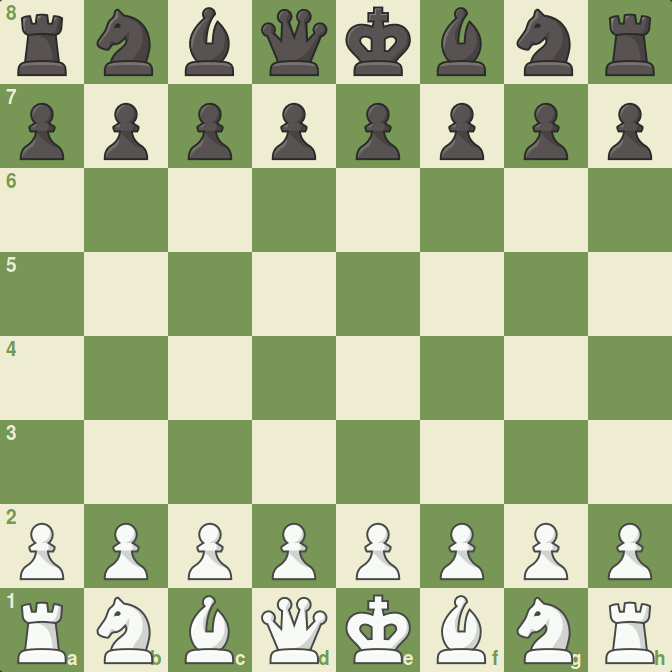
Chess is a game of strategy, wit, and foresight. While achieving checkmate in just three moves is rare in a competitive setting, understanding these strategies can help you win quickly against less experienced opponents or in casual games. In this guide, we’ll explore how to win at chess in three moves, covering all essential aspects.

1. The Fool’s Mate: Fastest Checkmate

The Fool’s Mate is the quickest way to achieve checkmate in just two moves, but it relies on your opponent making specific mistakes. It goes like this:
- e4 (Pawn to King’s 4): This move opens up lines for your queen and bishop and controls the center of the board.
- f6 (Pawn to King’s 3): This move, known as the “Fool’s Mate,” is a critical blunder. It weakens the pawn structure and exposes the king’s position.
- Qxf7# (Queen takes F7): This is checkmate! The queen moves to capture the pawn on f7, putting the black king in check with no available moves to escape.
2. Scholar’s Mate: A Classic Opening Trap

The Scholar’s Mate is another quick checkmate strategy that takes only four moves to execute. It often catches beginners off guard:
- e4 (Pawn to King’s 4): As in the Fool’s Mate, start with this move to control the center and open up lines for your pieces.
- e5 (Pawn to King’s 4 by Black): Black’s response, mirroring your move, is also a mistake.
- Qh5# (Queen to H5): Your queen attacks the vulnerable f7 square while also threatening the pawn on h7. Black has limited options.
- Nc6 (Knight to Queen’s 6 by Black): This move is a blunder by Black, blocking the escape route for the king.
Now, play Qxf7# (Queen takes F7), and it’s checkmate once again!
3. The 3-Move Checkmate: A Deeper Strategy
While the Fool’s Mate and Scholar’s Mate are fun to know, they rely on your opponent’s inexperience. Achieving checkmate in three moves in a more realistic scenario requires a bit of strategy:
- e4 (Pawn to King’s 4): Start by controlling the center and allowing your queen and bishop to move.
- e5 (Pawn to King’s 4 by Black): Black often mirrors your moves.
- Qh5# (Queen to H5): Now, instead of waiting for your opponent to blunder, you’re setting up a threatening position. You’re attacking the vulnerable f7 square, which Black must defend.
- Nc6 (Knight to Queen’s 6 by Black): As Black defends the f7 square, they inadvertently block their king’s escape route.
- Nf6# (Knight to King’s 6): Move your knight to f6, putting the black king in check. The black king has no legal moves, and it’s checkmate!
4. Avoiding Common Mistakes
While these three-move checkmate strategies can work against inexperienced opponents, more experienced players will likely avoid falling into these traps. To improve your overall chess game, consider these tips:
- Control the Center: Occupy the center of the board with your pawns and pieces to gain more mobility and options.
- Develop Your Pieces: Get your knights and bishops into the game early. Knights on f3/c3 and f6/c6 and bishops on c4/f4 and c5/f5 are solid starting positions.
- Castle Early: Castling provides safety for your king and connects your rooks. It’s a fundamental opening move.
- Plan Ahead: Have a long-term strategy in mind. Consider pawn structure, piece coordination, and king safety in your plans.
- Practice Tactics: Work on tactics like forks, pins, skewers, and discovered attacks to gain a tactical advantage.
- Study Openings: Familiarize yourself with common openings and their ideas. This will help you reach favorable positions in the early game.
- Endgame Proficiency: Learn basic endgames, including how to checkmate with a king and queen versus a lone king.
Conclusion
While achieving checkmate in just three moves is rare at higher levels of chess, understanding these strategies can help you win quickly in casual games or against less experienced opponents. However, remember that chess is a complex and strategic game that rewards long-term planning and tactical skill. As you progress in your chess journey, you’ll discover a wealth of intricate strategies and tactics that will enhance your gameplay.
Read More:




